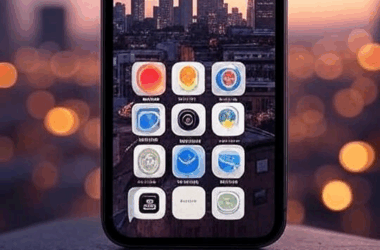COVID-19 no longer makes daily headlines in 2025. But that does not mean it has gone away. The virus still exists, people still get sick. So, what changed? One of the many reasons for this better place we are in today is the presence of COVID-19 vaccines.
Vaccines had played a very strong role in fighting illness, forging protection, and thus saving millions of lives worldwide.
This blog post will discuss how they work, the side effects, common myths and truths about these vaccines, combating such myths, and how COVID vaccination has taught us about health on a global scale.
An Overview of COVID-19
COVID-19 is a disease caused by a virus called SARS-CoV-2. It spreads from person to person mainly through tiny droplets when one coughs, sneezes, talks, or breaths closely with others. The first cases appeared in late 2019.
Within months, COVID-19 became a global pandemic. Millions of people died, hospitals were overwhelmed, and life as we knew it changed.
Many people had mild symptoms like fever, cough, or fatigue. But for others—especially older adults and those with health issues—COVID-19 caused serious breathing problems, long-term health issues, and even death.
READ ABOUT HEALTH ISSUES COVID -19 : Coronavirus disease (COVID-19)
What Is the Working Principle of COVID-19 Vaccines?
COVID-19 vaccines teach the body to fight the virus before it makes the body sick. One could see them as an educational session for the immune system. So, after being vaccinated, if the body ever encounters the same virus once again, it knows how to rapidly react and neutralize it.

There are different kinds of COVID-19 vaccines; some utilize mRNA technology (for example Pfizer and Moderna), while others use a harmless virus to deliver instructions (Johnson & Johnson or AstraZeneca). In essence, they all do the same thing, which is to train your body to defend itself.
READ MORE: NB.1.8.1 and LF.7: What is India’s New Coronavirus Variants ?
Side Effects of COVID-19 Vaccine
Sometimes one experiences reactionary side effects after a COVID-19 vaccine. These reactions are indicators that the body is on the way to building protection.
Common side reactions include:
Pain at the injection-site
Feeling tired or sleepy
Mild fever or chills
Most of these side effects do not last more than a day or two. People get better fairly quickly. Serious side effects are rare, and institutional bodies watch over the vaccines to make sure that they are safe.
Myths and Facts About COVID-19 Vaccines
Even in 2025, misinformation about COVID-19 vaccines still causes confusion. Let’s look at some of the common myths—and the facts that clear them up:
Myth 1: COVID-19 vaccines were rushed and are unsafe.
Fact: Although vaccines were developed quickly, they went through strict safety checks. Scientists had years of experience with similar viruses, which helped speed up the process safely.
Myth 2: The vaccine changes your DNA.
Fact: COVID-19 vaccines do not affect your DNA. mRNA vaccines only teach your cells how to fight the virus and leave your body shortly after.
Myth 3: Once you’re vaccinated, you can’t get COVID-19.
Fact: Vaccines greatly reduce your risk of severe illness, but it’s still possible to catch the virus. That’s why booster shots are sometimes needed as new variants appear.
Myth 4: Natural immunity is better.
Fact: Getting COVID-19 can lead to long-term health problems or even death. Vaccines offer safer and more reliable protection without the risks of the illness.
What COVID-19 Vaccines Taught Us About Global Health?
The COVID-19 vaccine rollout taught the world many important lessons about global health and how countries respond to health emergencies.
- Teamwork makes a difference. Countries worked together to develop and distribute vaccines faster than ever before. This kind of global cooperation was inspiring.
- Access matters. Some countries received vaccines much later than others. This reminded the world that health care access needs to be fair for everyone, not just wealthy nations.
- Public trust is key. Many people were hesitant or unsure about getting vaccinated. Building trust through clear communication was just as important as making the vaccines.
- Science can move fast. mRNA vaccines were developed in record time. This new technology might help create faster treatments for other diseases in the future.
READ ALSO: Do’s and Don’ts in PCOD Diet Charts for Better Health
COVID-19 Vaccines in 2025: Where Are We Now?

In 2025, COVID-19 vaccines are still recommended, especially for:
- Older adults
- People with weakened immune systems
- Health care workers
- Travelers
- Teachers and essential workers
Booster doses are now common, especially when new COVID-19 variants appear. Just like with flu shots, people are encouraged to stay updated with their COVID-19 protection every year or as recommended.
Thanks to vaccines, we have fewer hospitalizations, fewer deaths, and more freedom to live our lives again.
Final Thoughts
COVID-19 vaccines have saved countless lives since 2020—and they continue to do so in 2025. They help protect not just individuals, but also families, communities, and entire countries.
While some people still have questions or concerns, the facts are clear: COVID-19 vaccines are one of the safest and most effective tools we have to fight this virus. They also opened the door to new ways of thinking about public health and how we respond to global emergencies.
If you or your loved ones haven’t had the latest booster, talk to your doctor. Staying protected is still important—and it’s never too late to take care of your health.











